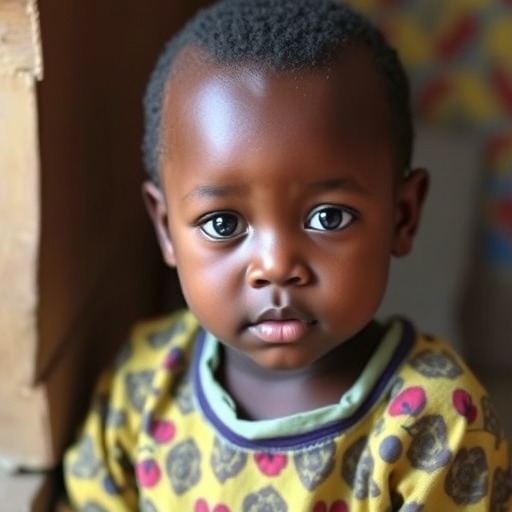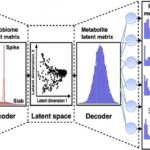
Paediatric acute myeloid leukaemia (AML) represents one of the most formidable oncological challenges in the pediatric population, particularly within low- and middle-income regions of Africa. Despite progressing medical technologies and refined treatment protocols worldwide, substantial gaps remain in the epidemiology, management approaches, and treatment outcomes for African children afflicted with this aggressive haematological malignancy. Recent research endeavors have sought to consolidate existing knowledge, scrutinize therapeutic efficacy, and identify critical obstacles hindering optimal care for paediatric AML patients across the continent.
A comprehensive review of available literature spanning two decades reveals a fragmented yet telling picture of paediatric AML within African contexts. Research coverage includes diverse geographic regions, encompassing both sub-Saharan and North African countries, but consistently highlights a scarcity of robust epidemiological data due primarily to limited diagnostic resources and constrained cancer registry infrastructure. This systemic under-reporting and under-diagnosis obscure the true incidence and mortality rates, complicating efforts to tailor interventions effectively.
Analytical synthesis of 22 studies beyond the initial 164 identified reflects on outcomes involving 2,230 children aged from birth to 17 years, underscoring the considerable heterogeneity in therapeutic regimens employed. Notably, treatment protocols vary substantially not only between countries but even within institutions in single nations, a variation often dictated by differences in available resources, drug accessibility, and expertise in paediatric oncology. These disparities inevitably affect remission rates and survival outcomes, frequently diverging sharply from global benchmarks.
.adsslot_8Gbc3rKHuN{width:728px !important;height:90px !important;}
@media(max-width:1199px){ .adsslot_8Gbc3rKHuN{width:468px !important;height:60px !important;}
}
@media(max-width:767px){ .adsslot_8Gbc3rKHuN{width:320px !important;height:50px !important;}
}
ADVERTISEMENT
Complete remission (CR) rates for paediatric AML patients exhibit significant variability, ranging extensively from as low as 23.1% to highs nearing 88.9%, with a median rate around 55%. The data for acute promyelocytic leukaemia (APL), a distinct subtype known for its relatively favorable prognosis, is comparatively encouraging; CR rates here fluctuate between 72.6% and 95.0%. These figures, while indicative of potential efficacy in certain treatment settings, simultaneously expose persistent obstacles in replicating consistent success across the continent.
The issue of early mortality emerges as a critical concern, with early death rates alarmingly high—spanning from 5% to as much as 96%, with a median approximating 29.3%. This stark figure reflects multifactorial challenges, including late presentation, diagnostic delays, inadequate supportive care infrastructure, and high incidences of treatment-related complications. Such mortality rates drastically undermine survival gains achievable through chemotherapy protocols and demand urgent attention toward improving pre-treatment evaluation and enhancing emergency response capacity.
Similarly, treatment-related mortality (TRM) poses a significant threat, ranging from 11.3% to 47.1%, its median hovering around 21%. These fatalities are frequently attributable to infectious complications, toxicity from intensive chemotherapy, and poor nutritional status among patients. The data suggest an urgent need for integrated supportive care frameworks, including infection prophylaxis, transfusion support, and nutritional rehabilitation, tailored to the constrained healthcare environments prevalent in many African settings.
Event-free survival (EFS) probabilities measured over five years present a wide spectrum, from a dismal 14.8% in high-risk patient subsets to a more optimistic 69.4% within APL cohorts. Overall survival (OS) rates for non-APL AML remain bleak, generally oscillating between 14% and 31.9%, with a median near 29.5%. These figures starkly contrast with survival outcomes in high-income countries, where advancements in molecular diagnostics, risk stratification, and access to hematopoietic stem cell transplantation (HSCT) have revolutionized paediatric AML prognoses.
Providing HSCT—widely recognized as a curative option especially for refractory or high-risk AML—is sporadic across African institutions; only fourteen children were documented to have received such treatment in the reviewed studies. The scarcity of transplantation services correlates strongly with infrastructural limitations, financial constraints, and shortage of trained personnel, compounding challenges faced by paediatric patients who might otherwise benefit from intensive, potentially curative therapies.
Treatment abandonment remains another pervasive barrier to successful outcomes, with rates fluctuating from 3% to 50%, and a median rate of 12.7%. Socioeconomic factors including poverty, transportation difficulties, cultural beliefs, and lack of disease awareness significantly contribute to this trend. Inconsistent follow-up and interruptions in treatment cycles consequently diminish therapeutic efficacy and further exacerbate mortality and relapse risks in this vulnerable population.
The emphasis on adapted treatment protocols becomes imperative in this context. Given the diverse resource landscapes across African countries, standardized high-intensity chemotherapy regimens common in high-resource settings may prove neither feasible nor safe. Creating stratified, risk-adapted therapeutic plans that incorporate local realities—such as variable diagnostic capacity, supportive care availability, and sociocultural dynamics—could improve overall outcomes while reducing adverse events.
Moreover, addressing systemic deficiencies requires multi-tiered strategies encompassing healthcare workforce training, establishment of regional oncology centers of excellence, and strengthening laboratory and pathology services to facilitate timely and accurate AML diagnosis. Enhanced funding mechanisms and international collaborations can catalyze resource allocation and knowledge transfer, empowering African institutions to elevate the standard of paediatric AML care.
An integrated approach to supportive care is equally vital. Infection prevention measures, access to blood products, nutritional support, and psychological services are critical adjuncts to chemotherapy that can reduce early mortality and treatment-related toxicity. Incorporating patient and family education within treatment paradigms may mitigate abandonment by fostering deeper engagement and understanding of disease trajectories and therapeutic expectations.
In research terms, the observed paucity of high-quality prospective studies underscores the necessity for concerted data collection initiatives aimed at generating comprehensive epidemiological and clinical datasets. Such evidence is essential to inform policy, optimize treatment algorithms, and tailor interventions with greater precision to local needs. Robust cancer registries and surveillance systems would also enable longitudinal tracking of outcomes and facilitate comparative effectiveness research.
The complexity of paediatric AML management in Africa thus reflects a broader narrative of global health inequities, where clinical and infrastructural challenges intersect with socioeconomic constraints to produce suboptimal outcomes. Nonetheless, the identification of promising remission rates, particularly in APL subtypes, indicates that clinical success is achievable with appropriate resource alignment and protocol adaptations.
Ultimately, improving survival for African children with AML necessitates holistic engagement encompassing clinical innovation, health system strengthening, community mobilization, and sustainable funding commitments. A paradigm shift from borrowed treatment models to context-sensitive frameworks could herald significant strides in transforming AML from a fatal diagnosis to a manageable and, increasingly, curable disease within the continent.
As awareness spreads and international partnerships grow, the momentum for tailored African paediatric AML care pathways gains traction. This review not only synthesizes our current understanding but also acts as a clarion call for urgent action to bridge gaps, reduce mortality, and empower a generation of young patients to survive beyond the confines of this devastating diagnosis.
Subject of Research: Paediatric acute myeloid leukaemia epidemiology, treatment approaches, and outcomes in Africa.
Article Title: Paediatric acute myeloid leukaemia epidemiology, treatment approaches, and outcomes in Africa: A review of the literature.
Article References:
Nyeko, R., Kruger, M., Niyonzima, N. et al. Paediatric acute myeloid leukaemia epidemiology, treatment approaches, and outcomes in africa: A review of the literature.
BMC Cancer 25, 1140 (2025). https://doi.org/10.1186/s12885-025-14552-8
Image Credits: Scienmag.com
DOI: https://doi.org/10.1186/s12885-025-14552-8
Tags: African cancer registry limitationsAML treatment outcomes in Africachallenges in cancer care Africachildhood cancer diagnosis obstaclesdisparities in cancer treatment Africaepidemiology of childhood leukaemiageographical variations in paediatric AMLimproving outcomes for paediatric cancer patientsPaediatric acute myeloid leukaemiapaediatric oncology in low-income countriesresearch on childhood leukaemia in Africatherapeutic protocols for paediatric AML



